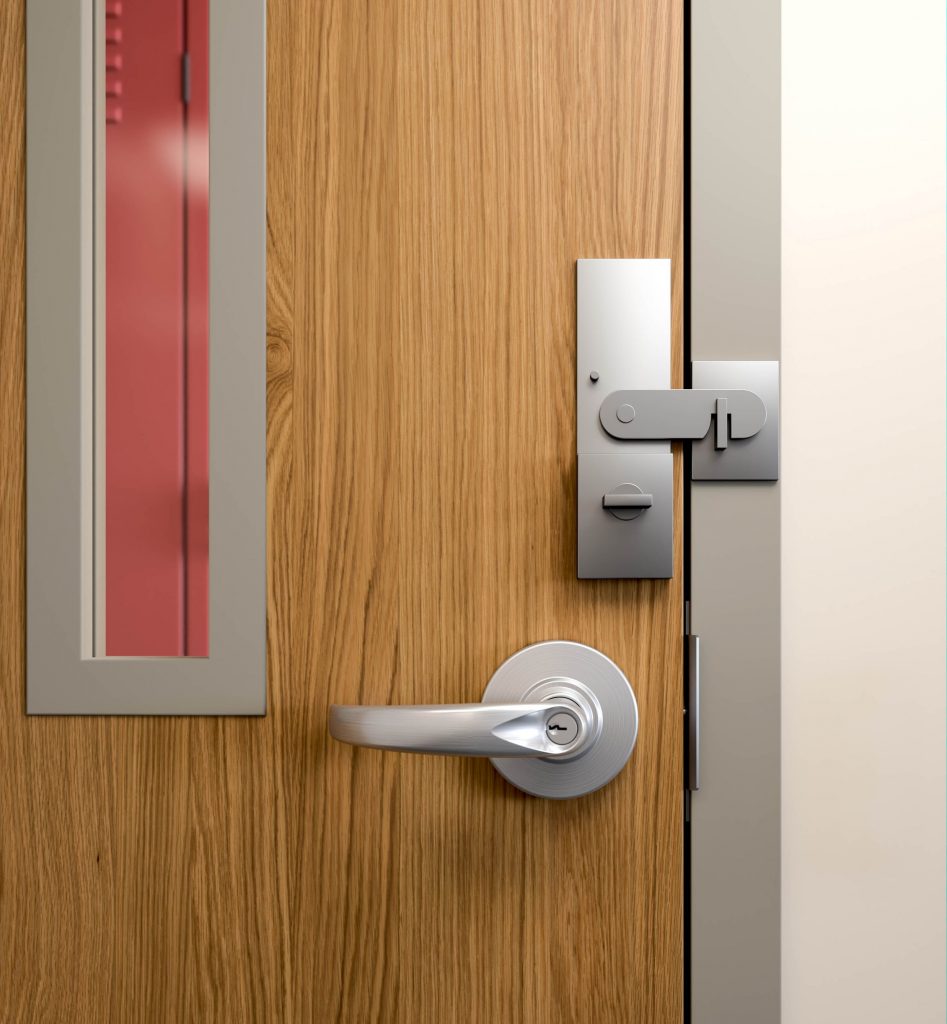We’re less than a week away from a vote that could change life safety requirements that have been in use for decades. Several organizations have already spoken out against the change, including the National Association of State Fire Marshals (NASFM):
“NASFM is certainly aware of the need to protect our schools and businesses from senseless acts of violence, however we feel strongly we must carefully consider the solutions being proposed around the country. Some of the proposed or implemented solutions specifically affecting classroom doors, while well intended, may compromise aspects of life safety. NASFM’s guidelines for Classroom Door Security and Locking Hardware draws attention to important requirements that new and existing classroom doors unlatch with one operation in order to ensure free and immediate egress. Classroom doors are also required to meet Federal accessibility laws and building and fire code requirements which include the ability to operate door hardware with no tight grasping, tight pinching, or twisting of the wrist.”
Butch Browning, President – National Association of State Fire Marshals
~~~

This type of auxiliary lock, which could be acceptable if the new code language is approved, may impede egress and deter evacuation.
In case you aren’t familiar with the proposed change, here’s an overview:
- A change is being considered for the 2018 edition of NFPA 101 – The Life Safety Code, which would allow 2 releasing operations for egress doors serving classrooms in existing buildings, instead of the 1 releasing operation that has been required since the 1988 edition of the code.
- This change would apply to existing schools and day care centers, but would also apply to any room in any business occupancy, where approved by the code official. This could create a large volume of requests for the AHJs to review, and the potential for inconsistent security methods.
- The proposed language does not state that the 2 operations must not be required to be performed simultaneously (2 hands at the same time), and it does not require the hardware to be operable with no tight grasping, pinching, or twisting of the wrist. Hardware that requires these operations is not compliant with the accessibility standards or the Americans with Disabilities Act (ADA).
- This change, if approved, would be inconsistent with the code changes that have been approved for the 2018 International Building Code and 2018 International Fire Code with regard to classroom security.
- The vote on whether to allow 2 releasing operations or to maintain the current requirement for 1 releasing operation takes place at the NFPA Technical Meeting on June 7th.
When I first read the proposed language, I stopped to consider whether 2 releasing operations created a situation that would be detrimental to life safety. There was no data to consider, no studies conducted that I’m aware of. Then I dug into the NFPA documentation and found the response to the proposed change from the NFPA Technical Committee on Means of Egress:
For me, that was enough. If you’d like to read more about this proposed change:
- Here is an article that is running in the current issue of Doors & Hardware.
- I’ve collected some comments from experts in classroom security and life safety, which are available here.
- The Door Security and Safety Foundation has issued a statement on the proposed change.
More to follow as soon as I know the results of the vote!
You need to login or register to bookmark/favorite this content.






I am opposed to the change for Life Safety reasons and also because there are enough existing hardware solutions to satisfy the classroom safety issue without a second locking device
I would ask that the throw that extends past the latch be slightly extended to facilitate use by a closed fist more easily. Then….maybe. But this is by far the most sensible I have seen, but it still has all of the draw back you have been speaking about. Keep up the great work.